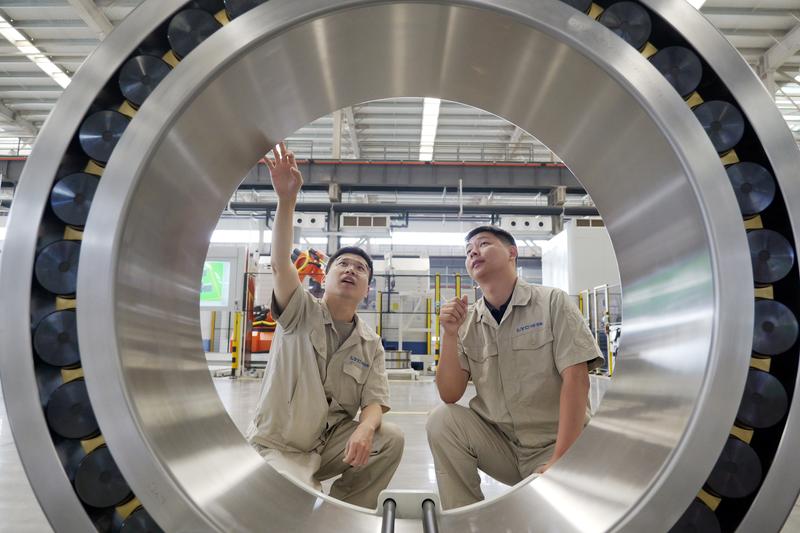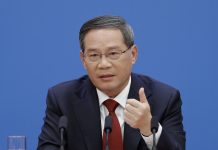
BEIJING: In 1954, one year after China initiated the inaugural Five-Year Plan (1953-57), a specialized factory for manufacturing bearings, core components of mechanical equipment, was set up in Luoyang, Henan province.
It was one of the 156 key projects launched nationwide during the period when the country was striving to build up the basic industries essential for national industrialization. These projects, spanning sectors such as steel, machinery, energy and chemical engineering, laid the foundation for China’s industrialization in its early days, marking a determined stride from an agricultural society toward industrial prowess.
Over 70 years later, Luoyang Bearing Group stands as a testament to this enduring vision, as it has evolved into an innovation-driven enterprise manufacturing over 30,000 types of high-precision bearings, vital to industries ranging from aerospace and wind power to rail transit and marine engineering.
During a visit to the company in May, President Xi Jinping, who is also general secretary of the Communist Party of China Central Committee and chairman of the Central Military Commission, reflected on this remarkable progress, saying: “China has always adhered to the path of developing the real economy. From the past reliance on imported matches, soap and iron, to now becoming the world’s largest manufacturing country with the most complete industrial categories, we have taken the right path.”
Sticking to this path, China has remained the world’s largest manufacturing country for 15 consecutive years. Observers noted that this transformative journey underscores the profound efficacy of the five-year plan system as a fundamental instrument of China’s governance.
Five-year plans are crucial strategic documents that outline national goals, major tasks and policy directions in various sectors for each five-year period.
It is an approach that experts say maintains policy continuity and stability toward established goals, and ensures the efficient and well-calibrated allocation of resources.
Formulating and implementing five-year plans has been a hallmark of the Communist Party of China’s governance, enabling China to promote coordinated economic and social development over the medium and long terms. For China, the consistent theme from the first Five-Year Plan to the 14th Five-Year Plan (2021-25), as President Xi pointed out, has been to build China into a modern socialist country.
For more than seven decades, a key to the enduring vitality of the five-year plan system lies in “a synergistic relationship in which the top-level design and long-term perspective of national planning effectively complement the microlevel efficiency and innovative drive of the market economy”, said Yan Yilong, deputy dean of the Institute for Contemporary China Studies at Tsinghua University.
“This system operates on three pillars: building consensus on national goals through political guidance and scientific planning, breaking down goals into actionable tasks with evaluation and supervision, and ensuring resource allocation to support these objectives,” Yan said.
The five-year plans are not merely economic plans but comprehensive national development blueprints, and the robust implementation of these blueprints is the highlight of China’s governance, he added.
Acknowledging the nature and significance of China’s five-year plan system, The Diplomat, a Washington, DC-based foreign affairs magazine, noted that “the plans are neither rigid blueprints nor mere guidelines. Instead, they act as authoritative signals that shape the behavior of ministries, provincial governments, State-owned enterprises, private firms, and increasingly foreign investors”.
Over the decades, China’s five-year plans have guided continuous progress in national development and living standards, from ensuring adequate food and clothing after completing the sixth and seventh five-year plans in the 1980s to propelling China’s total economic output to become the world’s second-largest in the 11th Five-Year Plan (2006-10) period.
“Five-year plans illustrate the nation’s shift from a planned economy to a socialist market economy,” said Zhang Zhanbin, director of the Chinese Modernization Research Center at the Party School of the CPC Central Committee.
He highlighted the transformative power of these plans by citing the example of the revitalization of Northeast China, comprising Heilongjiang, Jilin and Liaoning provinces.
The region became the nation’s heavy-industry heartland during the first Five-Year Plan period and was reinvigorated decades later by the 10th Five-Year Plan (2001-05), which proposed to support the adjustment and transformation of the old industrial base. Each subsequent five-year plan has included dedicated sections outlining tasks for Northeast China’s revitalization.
The 14th Five-Year Plan has initiated a more comprehensive revitalization phase for Northeast China, with a State Council-approved implementation plan outlining a clear road map for the region’s future.
“The elevating of the strategic positioning of Northeast China in the recent five-year plans reflects the Party and the country’s earnest expectations for its comprehensive revitalization in the new era,” Zhang said. –The Daily Mail-China Daily news exchange item




